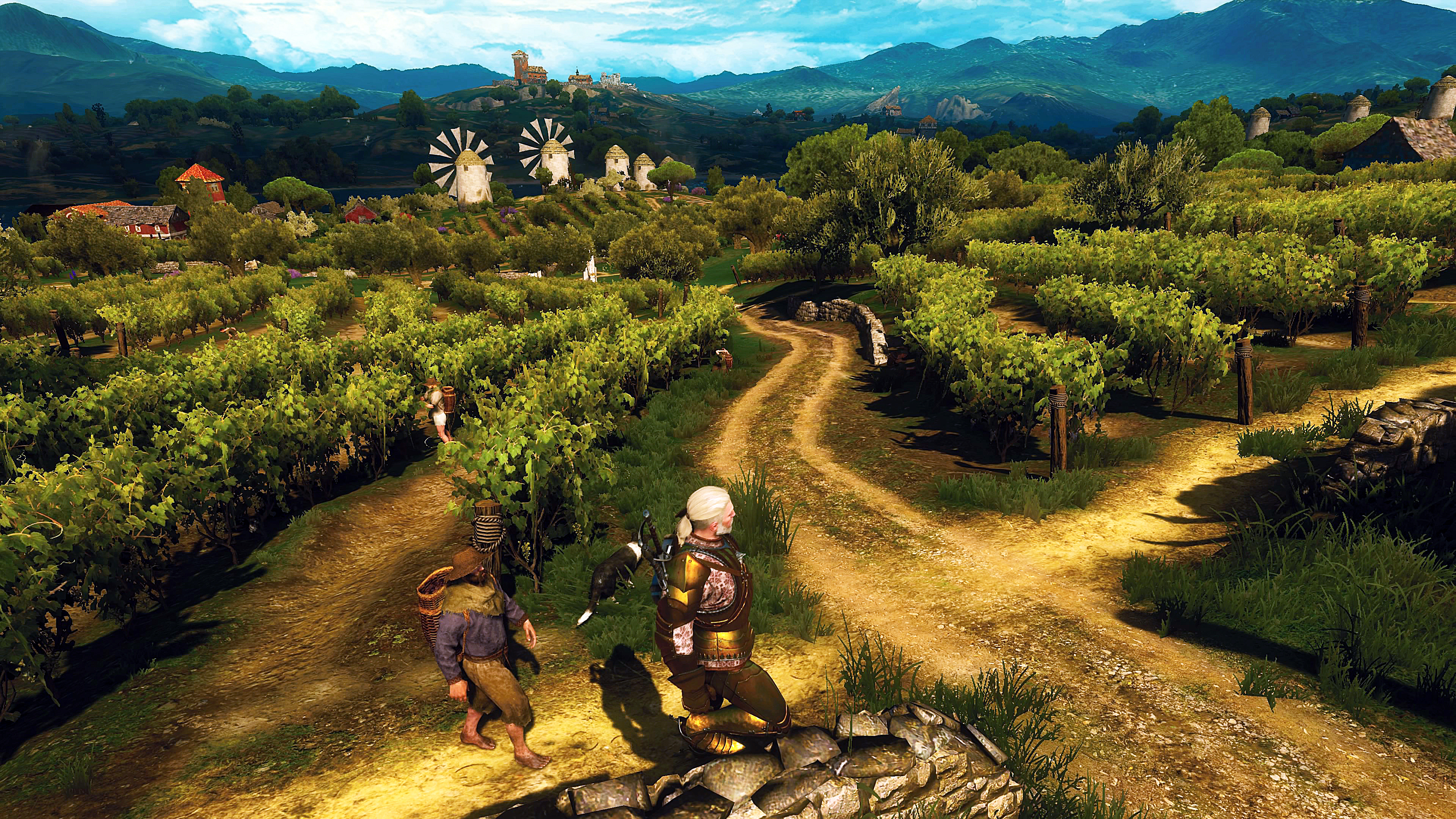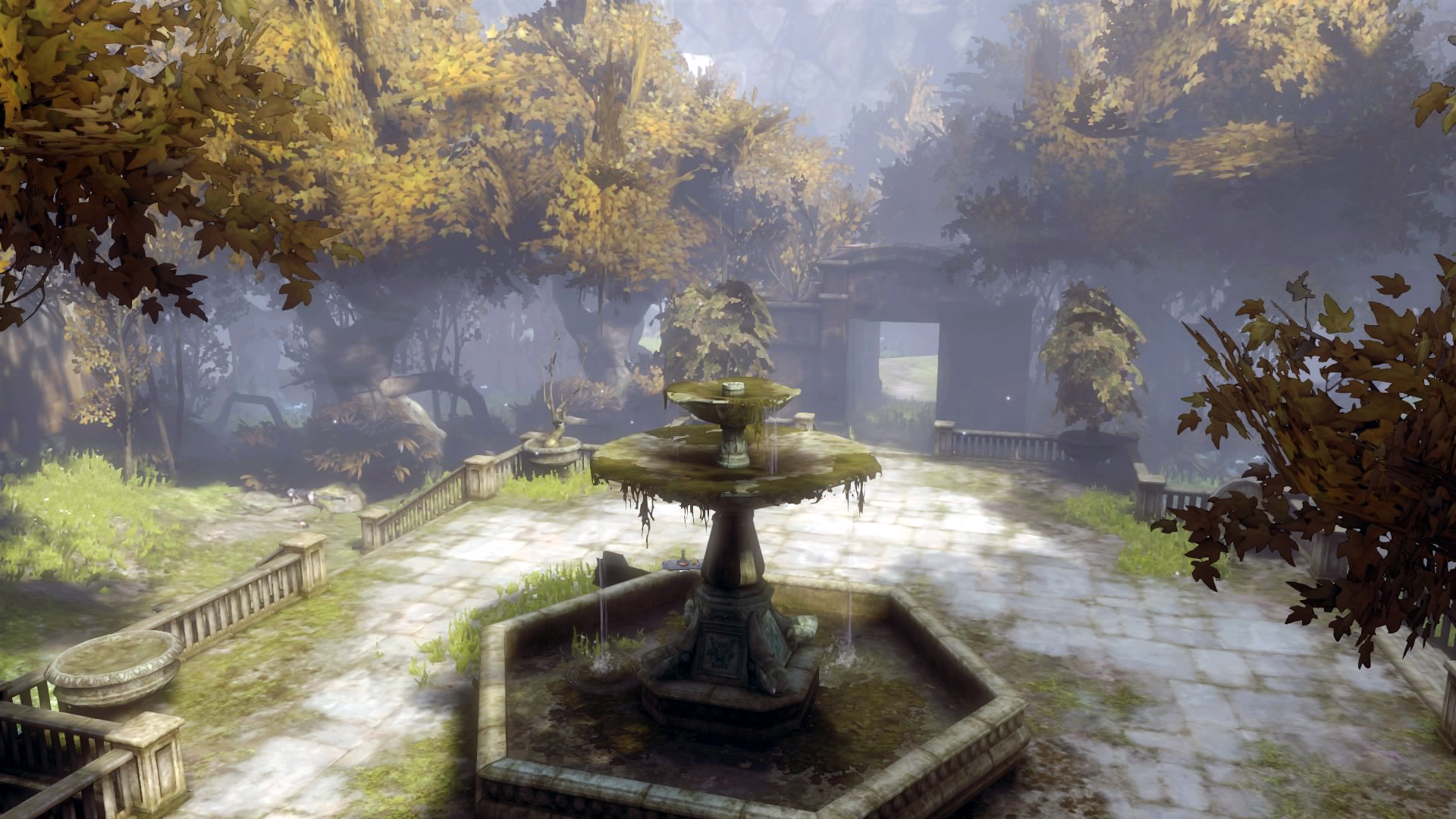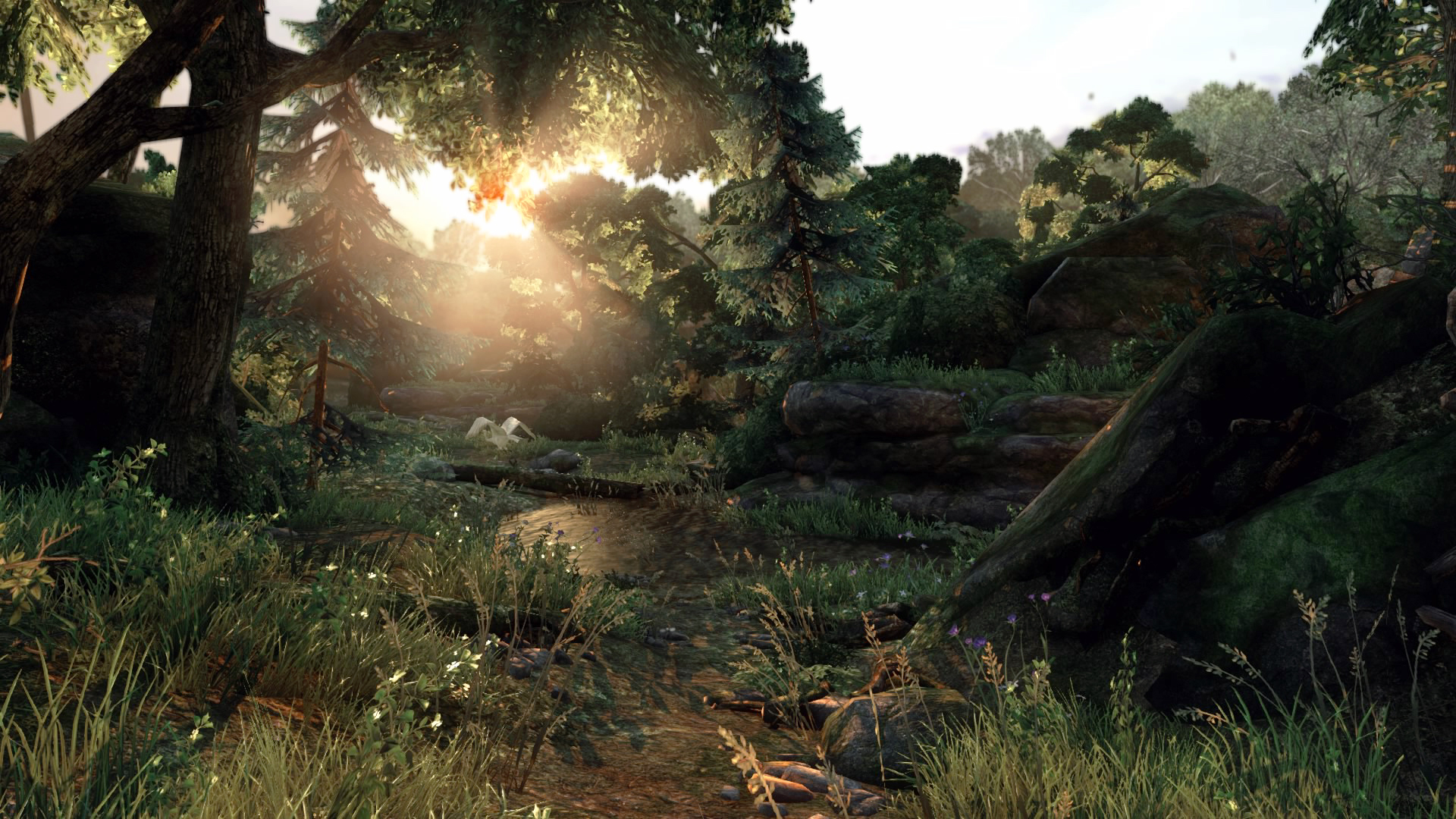
Cabin fever has been prevalent in recent weeks and months due to all the staying inside we've had to do and are doing – even if rules are beginning to relax a little. We are missing the total freedom of being outside and of exploring our real-world landscapes. Being a country bumpkin with qualifications in landscape architecture and garden design, I am feeling this acutely. But by merging my interest in landscapes and games, I find that wandering the environments of my favourite games I am able to scratch that landscape itch.
In a games library of plenty, however, there are some landscapes and gardens that I often revisit for inspiration, relaxation, and for some landscape escapism – particularly now. Some of the best really reveal themselves as great places to be and look around, and sit, even more so when there's no agenda, no mission, and no question marks to clear. In our time of isolation, and mainly interiors and window gazing, now is a great time to explore the virtual outdoors in games for some landscape escapism.
Long walks in expansive landscapes

When it comes to long walks and expansive spaces to explore, the open-world games come into their own. And Dragon Age: Inquisition is one of the best, housing two of my very favourite single landscapes and areas across all games. Tucked away in its southwest corner, the Hinterlands' Grand Forest Villa is my ideal country residence. It’s grand and spacious, and comes with a formidable build and perfect positioning. It's anchored into the landscape through its use of natural rock, the adjacent mountainside, and the waterfall that runs through it. As landscape anchor points - a landmark or dominant landscape feature - for walks go this one is perfect, providing the perfect spot from which to enjoy what are essentially the Villa's gardens and grounds: lush forests, serpentine rivers and streams, rolling fertile farmlands, and plenty of hidden spots, groves, copses, and viewpoints. Perfect for a landscape buff who can't really explore those to one's heart's content in the real world now.
What makes some of Inquisition's landscapes so special, is the merging of magic with land, and no area demonstrates this more so – or as beautifully – than Emprise du Lion. While it might seem oppressive due to its wintry setting, it is a powerful landscape to be a part of – easy to get lost with every snow-crunching footstep. Its strongest characteristics come from its magical nature, particularly in the form of the jagged protrusions of lyrium crystals. These contrast with the snow-white land, creating a landscape literally infused with magic. Combine this with a great synergy between the created, Elven architecture and natural occurring mountainous architecture that frames the entire environment, and there is a true beauty that I relish and enjoy on every visit. Finish that with the sounds of a landscape such as wind blowing through the trees, as well as the notes of 'In Hushed Whispers' carried fleetingly on the wind, echoing and reverberating softly, and it really is a complete and relaxing landscape experience.

While those areas are great for landscape solace and to relax in idyllic and picturesque environments, sometimes there's a desire to get into more social landscapes – even if it's just to people-watch or feel part of a busy landscape. If you too want to be part of a virtual working landscape, with the hustle and bustle of people, then you should consider revisiting The Witcher 3. The populated, working and fastidiously detailed and accurate landscapes are some of my favourites as they are not static: they are made by their action and life.
The productive agricultural fields being tended to, the orchards arranged by tree type, dense woodlands featuring real-world plant combinations such as ferns and hellebores, and the glorious mix of exposed mountain-top landscapes and rich, stream-fed lands in Skellige are ridiculously great bits of design. Walking around these always proves relaxing, and also visually, aurally and almost sensually stimulating. They strike that wonderful balance of fantasy-come-realistic that keeps me coming back whenever I need that perfect escape.
Gardens and intimate landscapes

However, sometimes I need something more intimate, something more designed and manicured to admire. And that's where the gardens of Dishonored come into play - these are so good that I have dedicated garden-enjoyment saves for all of the best ones. And that's because they are exquisitely formed and executed from a garden design perspective; each garden has deliberate design choices and decisions within them, manifesting themselves in genuinely beautiful horticulture, brilliant social and seating spaces, attractive walking routes, and strong design themes underpinning each feature.
Weekly digests, tales from the communities you love, and more
The Boyle's manicured and intentionally-imposing garden design is a great place for an urban garden stroll. There's genuine horticulture – and intentional power through design – to enjoy here: manicured plants and lawns; deliberate and imposing specimens flanking entrances; and trees and hedges used to shape and block views at will in the garden's perimeter. Over at the peaceful and sunken Stilton's Manor (in it's non-dilapidated form – though there is a particular sense of place that a secret garden in ruin has, and wandering through its skeleton form) one has a quiet, pensive place to sit and escape; almost meditative one that contrasts that of the Boyle's in Dunwall. In stark contrast to the neat and tidy Boyle's Mansion, I greatly enjoy strolling around Brigmore Manor where the gardens have a close relationship with the landscape beyond: some neater, more ordered design is close to the house, while a looser, more natural garden design style is further away, melting into the landscape beyond.

Finally, the exquisite garden design in the Duke's Palace makes it the best of the bunch. It's a supremely well-designed Mediterranean garden, which weaves the theme of power neatly into its design. Luxurious finishes, enormous, striking, and difficult-to-achieve timber gazebos, imposing plants, big chunks of stone, and separation of zones make this an incredibly successful garden that I'd be proud to have designed in the real world, in any form. As a result, it really feels like a garden in which to inspect plants, walk, enjoy framed views and water features, and escape into, enjoying each view and seating area.
If I want a garden feel but with life and people, then I'll visit a few squares in Karnaca, such as the Malveros Victory Plaza in Death of the Outsider, or go and drink in the Campo Seta Dockyards to enjoy a public, streetscape affair. Though in this respect I prefer the Renaissance city settings in Assassin's Creed 2. Here there is an opportunity to both enjoy public squares, but also hidden pocket gardens and lush balconies filled with plants. Returning to the streets of Venice and Florence strikes a particularly personal note as we were due to have an Italian honeymoon this May. We'll have to keep it virtual for the time being. It's obviously not the same but it's nice to be there in some capacity and to sort of 'feel' the spaces, gardens, and streetscapes, virtually.
Familiar-yet-unfamiliar landscapes

"...the extent to which games' landscapes can go to be virtual substitutes for our real ones is both staggering and comforting."
Lastly, I often enjoy those virtual landscapes which are almost entirely hypothetical: post-apocalyptic landscapes. The landscape of The Last of Us, for example, is familiar to me because the game is one of my favourites, but its landscape harnesses the unknown, showing an untamed mother nature fully unleashed upon the world in all her beautiful glory.
While it's a strange environmental dichotomy and duality – based on real landscape elements yet with imagined circumstances influencing it – it's genuinely, staggeringly beautiful to enjoy at many points. Particularly after stressful or tense encounters, I can't think of a better landscape to walk around and lose myself in: that little walk before Bill's town is a gorgeous environmental sigh of relief; the (stress-free) part of Ellie's winter adventure is evocative and powerful; the autumnal University grounds beautifully depicts the season of change; and the few moments of spring's glory in the woods near Jackson in the games final moments brings true landscape beauty to the fore.

There's a certain calming effect to be gained from revisiting favourite games: the combination of the game and the game's setting being personal favourites makes each revisit soothing and restful. It's somewhat of a cliche but it's similar to the feel of taking refuge in your favourite jumper or pair of shoes or rewatching your favourite series. All to take a bit of comfort in the familiar to boost one's mindfulness and to gently lean on the reset button.
I have a soft spot for almost all game landscapes: the combination is the beautiful collision of two of my favourite things. But it's never quite the same, of course. However, the extent to which games' landscapes can go to be virtual substitutes for our real ones is both staggering and comforting. And while we only get limited time outside in the real world right now – be it a small helping of fresh air, nature and landscape reduced to that of 'yard time', or a slightly longer walk we're allowed to have now – the options available in games brings me a bit of landscape escapism and respite from the same four walls I'm otherwise staring at every day.

Fancy seeing what else Team GamesRadar play for a bit of comfort and escape? Here's what Leon, Ellen and I talked about when discussing exactly that.
Rob is the Deputy Editor of sister site, TechRadar Gaming, and has been in the games and tech industry for years. Prior to a recent stint as Gaming Editor at WePC, Rob was the Commissioning Editor for Hardware at GamesRadar+, and was on the hardware team for more than four years, since its inception in late 2018. He is also a writer on games and has had work published over the last six years or so at the likes of Eurogamer, RPS, PCGN, and more. He is also a qualified landscape and garden designer, so does that in his spare time, while he is also an expert on the virtual landscapes and environments of games and loves to write about them too, including in an upcoming book on the topic!



